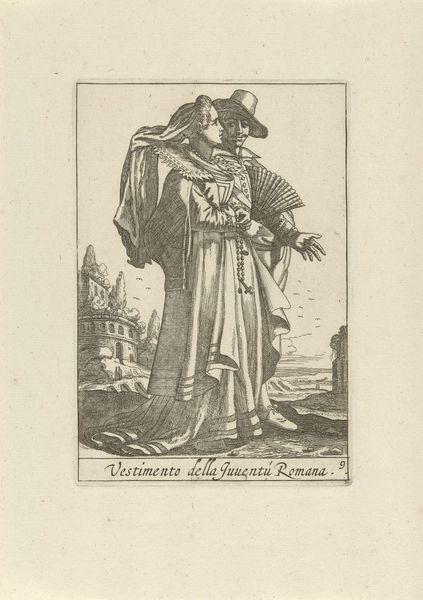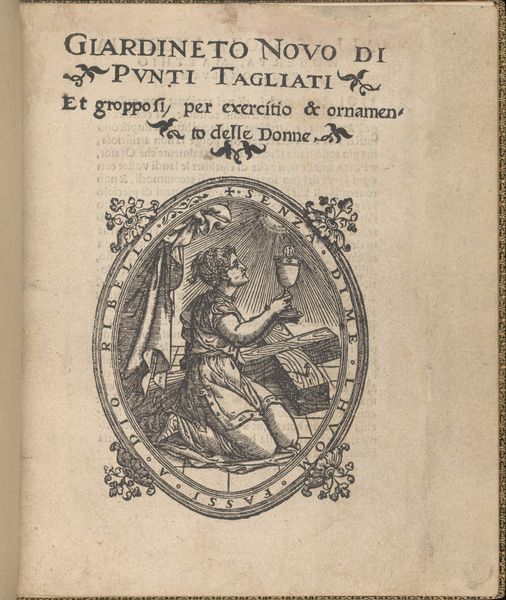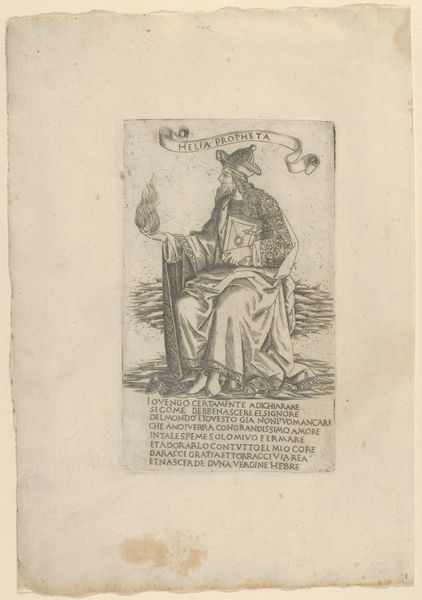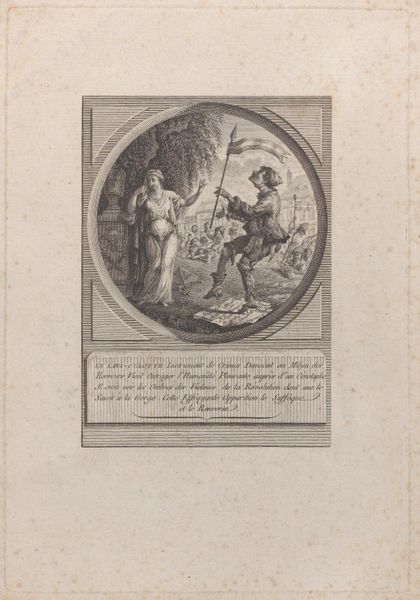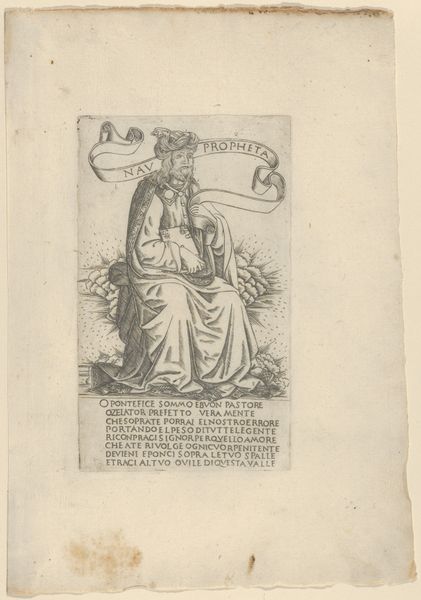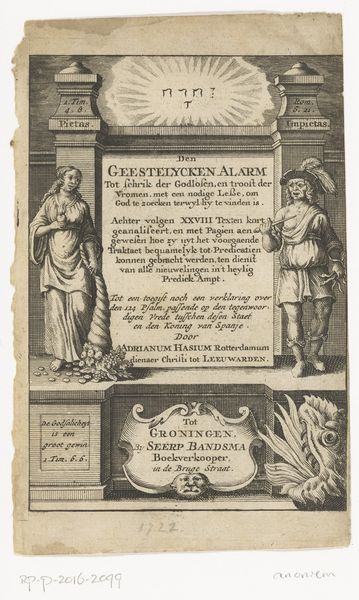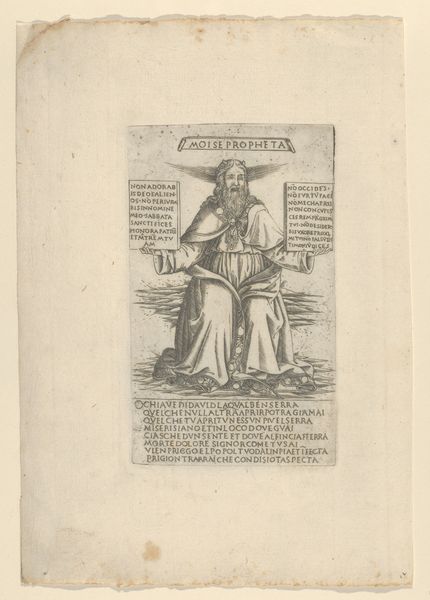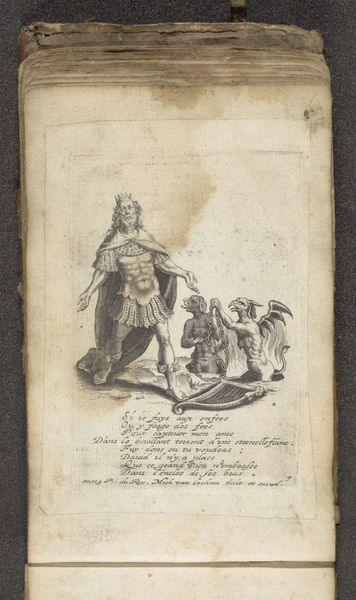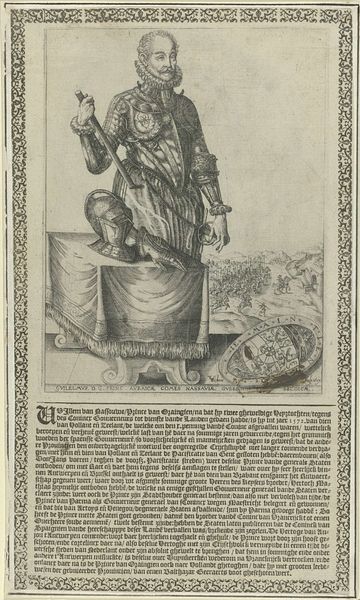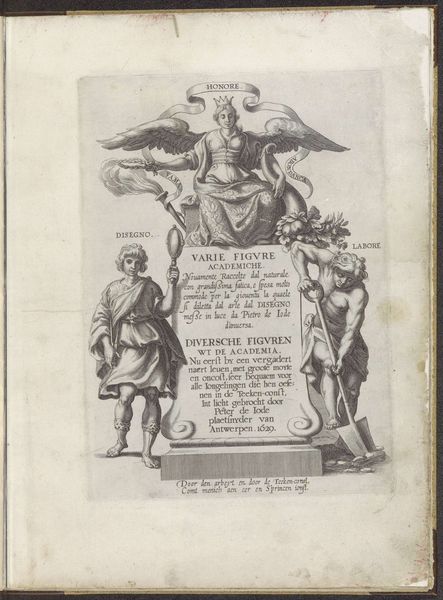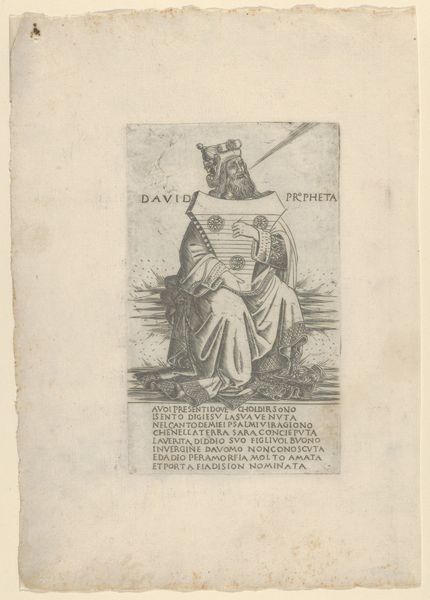
drawing, print, engraving
#
drawing
#
baroque
# print
#
figuration
#
history-painting
#
engraving
Copyright: Public Domain
Curator: Immediately, I'm struck by the delicacy and detail in such a small print. It’s a certain kind of Baroque sensibility isn’t it? This is "Armenie, from Jeu de la Géographie," an engraving by Stefano della Bella from 1644. It’s currently part of the Metropolitan Museum of Art’s collection. Editor: My initial impression is one of slightly melancholic grandeur. The figure seems regal, but the fine lines and small scale give it an air of vulnerability, doesn't it? The weight of history etched into this tiny tableau. Curator: Precisely! Consider the context. This print was part of a set of playing cards, each representing a different region. Della Bella captured not just a place, but a concept of it – a visual shorthand loaded with symbolic meaning. The female figure is adorned in what would have been perceived as Armenian garb at the time, laden with associations of the exotic "Orient." Editor: So the imagery isn’t really an authentic or objective account of Armenia, but rather a Western European construction? It tells us as much about European perceptions as about Armenia itself? Curator: Absolutely! The feather headdress, the flowing robes – they speak more of European fantasies of the East than accurate depictions. These kinds of signifiers have cultural and political ramifications and really crystallized into how different communities thought about the world. It's cultural memory shaped and reshaped over centuries through prints like this one. Editor: And how were these ‘Armenian’ images employed politically and ideologically? Was it for trade purposes? Promoting empire? Religious dialogue or something else entirely? Curator: A bit of all, perhaps! Consider how European powers positioned themselves relative to these regions, staking their claims, cementing their place on the world stage. Prints like these circulated ideas but they were hardly neutral documents. The description inscribed in the plate indicates Armenia extending “from the Euphrates to the Caspian sea," which paints a picture, or rather stakes a claim to the entire region. Editor: It makes you wonder about the power of such miniature things. Even in these tiny, detailed engravings, vast empires were being subtly mapped and negotiated, using dress as signifier, which echoes long after 1644. Curator: Yes, and understanding how these images worked, how they resonated is vital. It teaches us so much about the long legacy of representation. Editor: And to appreciate how, even on something seemingly innocuous like a playing card, power and prejudice can be packaged in exquisite detail. A reminder of how the past constantly shapes the present.
Comments
No comments
Be the first to comment and join the conversation on the ultimate creative platform.
